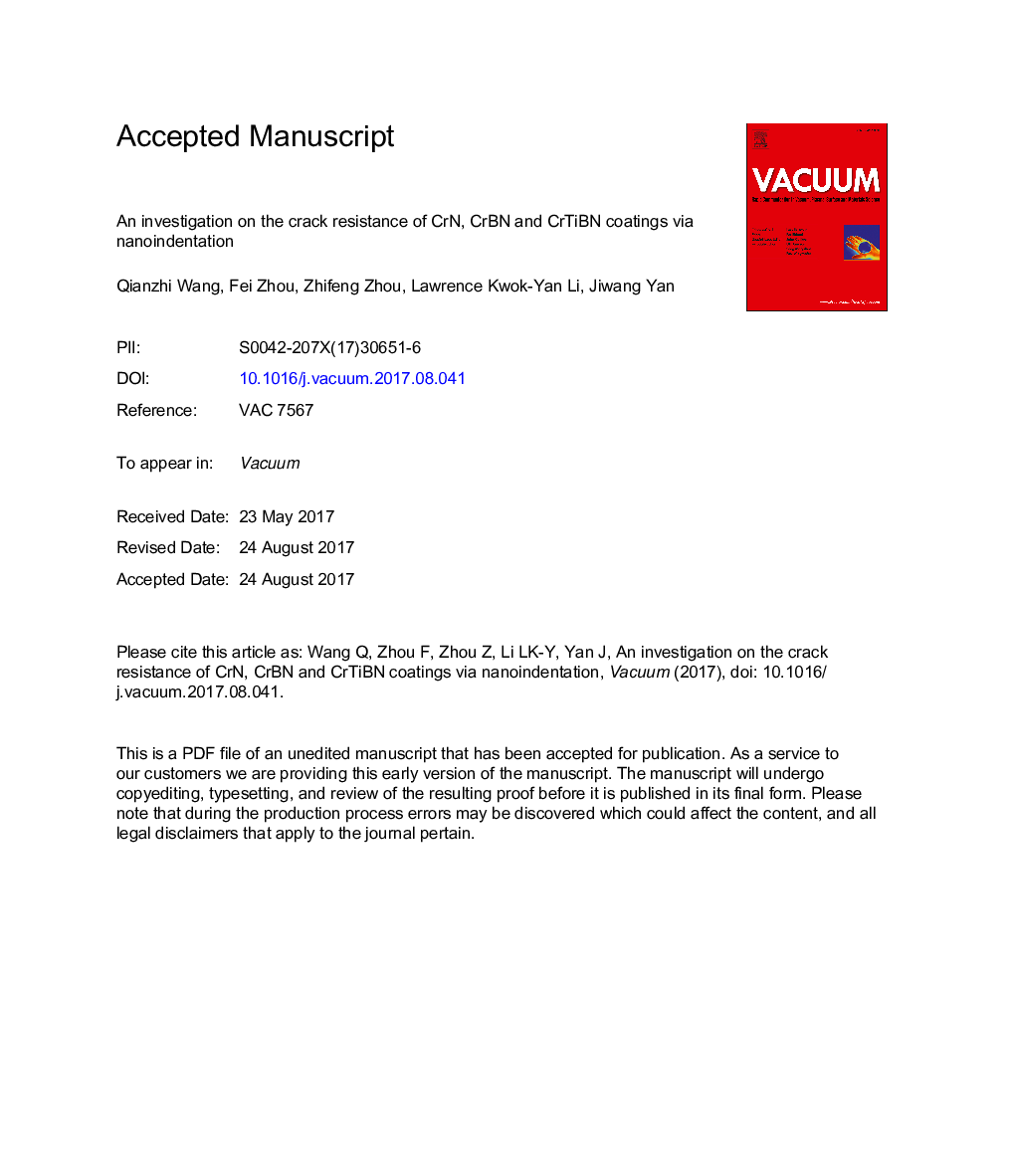| Article ID | Journal | Published Year | Pages | File Type |
|---|---|---|---|---|
| 5468235 | Vacuum | 2017 | 27 Pages |
Abstract
This study is to pinpoint the effect of B doping and Ti-B co-doping on the crack resistance of CrN coating via nanoindentation. X-ray photoelectron spectroscopy (XPS) indicated that, besides Cr-N bond, B-N bond formed in CrBN coating while B-N and Ti-N bonds formed in CrTiBN coating. Owing to the stronger B-N, Ti-N bonds and nano-composite structure, CrBN and CrTiBN coatings presented a much higher hardness of 25.2 and 27.4 GPa than CrN coating (15.2 GPa). More importantly, the improved mechanical properties (H/E â¥Â 0.083, We â¥Â 78.6%) and high compressive stress (Ï â¥Â 3.53 GPa) of CrBN and CrTiBN coatings prevented them from encountering radial cracks under 700 mN. In contrast, CrN coating suffered radial cracks even under 400 mN. However, circumferential cracks emerged on CrBN and CrTiBN coatings under a combination effect of high compressive stress, poor plasticity (Rp) and low hardness ratio between substrate and coatings (Hs/H). It was indicated that B doping and Ti-B co-doping could improve the resistance of CrN coating to radial crack, but weaken its resistance to circumferential crack. In addition, more circumferential cracks found on CrTiBN coating demonstrated that an extra Ti doping would further deteriorate the crack resistance of CrBN coating.
Related Topics
Physical Sciences and Engineering
Materials Science
Surfaces, Coatings and Films
Authors
Qianzhi Wang, Fei Zhou, Zhifeng Zhou, Lawrence Kwok-Yan Li, Jiwang Yan,
